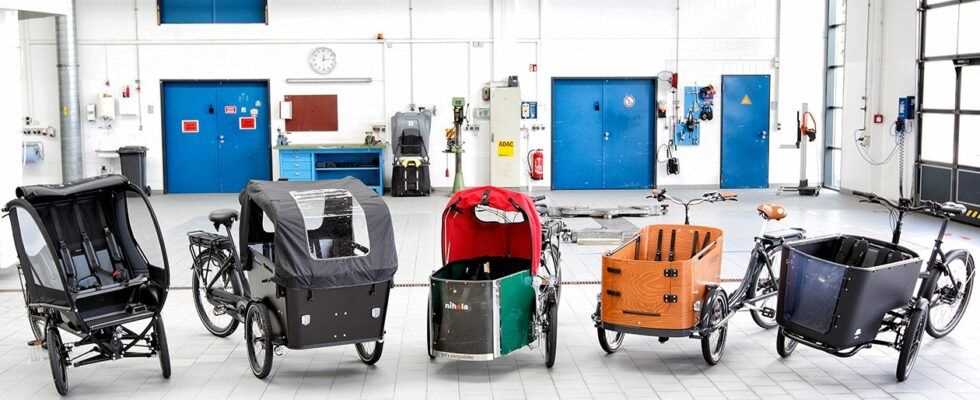Everything that drives electrically is environmentally friendly? Doubtful when you look at the masses of scooters in the city centers. But cargo bikes? Yes, they could partially replace car journeys. The ÖAMTC, together with its partners, has now tested five of these pack donuts in the price range of around 3,000 to 8,000 euros.
Electric cargo bikes offer a wide range of transport options in urban areas: from the commercial transport of goods to private use as “children’s taxis” or for large family weekly shopping. The considerable luggage volume and the high payload in combination with the electric drive enable transport tasks over shorter distances that are comparable to a small car. Another issue is that they can act as bulky obstacles in road traffic.
Two cargo bikes “good”
In the test, two test candidates scored “good”, two “satisfactory” and one failed in the test, all One of the two good ones is the “e-kids” from Chike from Germany. It scores with solid workmanship and high security. The incline technique makes it similar to riding a normal bicycle. Various transport attachments are available for the model – in the test, a covered version was used especially for transporting children.
The “MK1-E Automatic” from the Danish manufacturer Butchers & Bicycles was also rated “good”. It is of high quality, well equipped and sprung and scores with a powerful motor and a maintenance-free belt drive. Child safety, however, suffers from the fact that the heads are exposed above unprotected – this turned out to be dangerous in a crash test by the ÖAMTC in July 2021.
The cargo bike “e-Family” from the manufacturer Nihola from Denmark achieved a “satisfactory” rating. On the one hand, the drive has the greatest range, on the other hand, the engine responds late and heavily – in combination with the very direct steering, an unsafe driving experience is created at higher speeds.
The “Go-E” from the Dutch manufacturer Babboe looks stylish, but also only achieved a “satisfactory” rating in the test. The driving characteristics are “nervous” – the bike sways at high speed. The speed-dependent support leads to poor results on the mountain. The range was the lowest of all candidates in the test.
The only “not enough” in the test goes to the “Carry 3” from the manufacturer Vogue in the Netherlands. “This is due to the dangerously weak and one-sided pulling brakes. The laying of the cables and the lack of approval mark for the light also attracted negative attention. We also found naphthalene in the handles and in the saddle, which is suspected of being carcinogenic, ”says ÖAMTC technician Steffan Kerbl, explaining the poor performance.
The following should be noted:
- Before buying, seek advice from a specialist retailer and, if necessary, take the children with you to try out the transport options for children.
- Be sure to test drive. “The driving behavior in curves in combination with the electric drive requires careful approach, regardless of the steering system used. If possible, you should also try out the bike with a load, ”says Kerbl. Check especially the braking properties.
- Children under the age of 12 must wear a helmet and be secured with a belt system. “In the event that a cargo bike tips over, children are better protected if their heads do not protrude over the edge of the transport tub and roll bars are in place.”
- Pay attention to the width of the vehicle. Cargo bikes with a maximum width of 100 cm are permitted on cycle paths, otherwise you have to drive on the street. All five test candidates are below this range.
- Clarify parking options in advance: Angled corridors (comparatively large turning radius) or stairs to a bicycle storage room or the size of the same can be a knockout criterion. Parking outside is permitted, but not recommended in view of the durability of the components.
- Parking on the street between parked cars is permitted; it is essential to use a parking brake to prevent it from rolling away. Parking is permitted on the sidewalk if it is wider than 2.5 meters and no one is obstructed. If there are bike racks on the street or on the sidewalk nearby, they can be used for security purposes.
- Parking in loading zones: “Stopping and no parking zones” with the addition “excluding loading activities” may be used with cargo bikes for loading activities if the cargo bikes are intended exclusively for the transport of goods.
